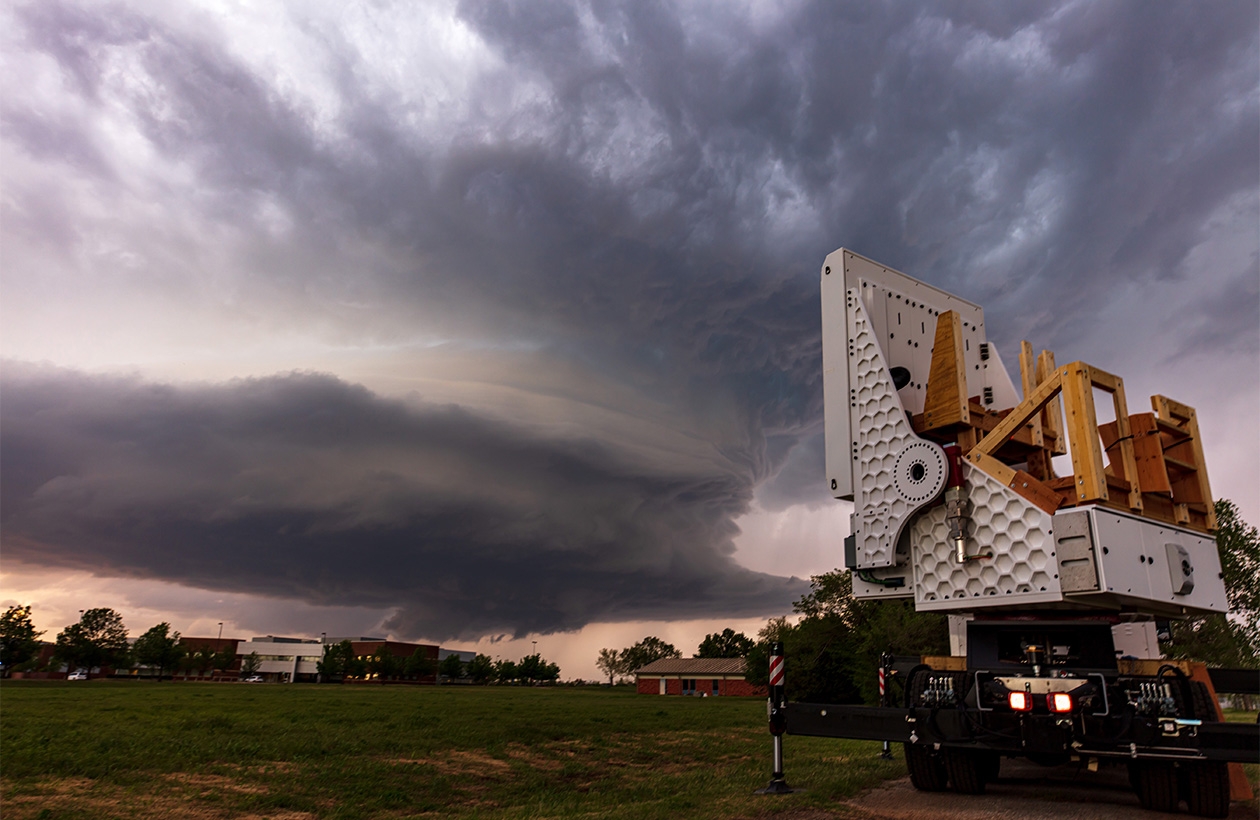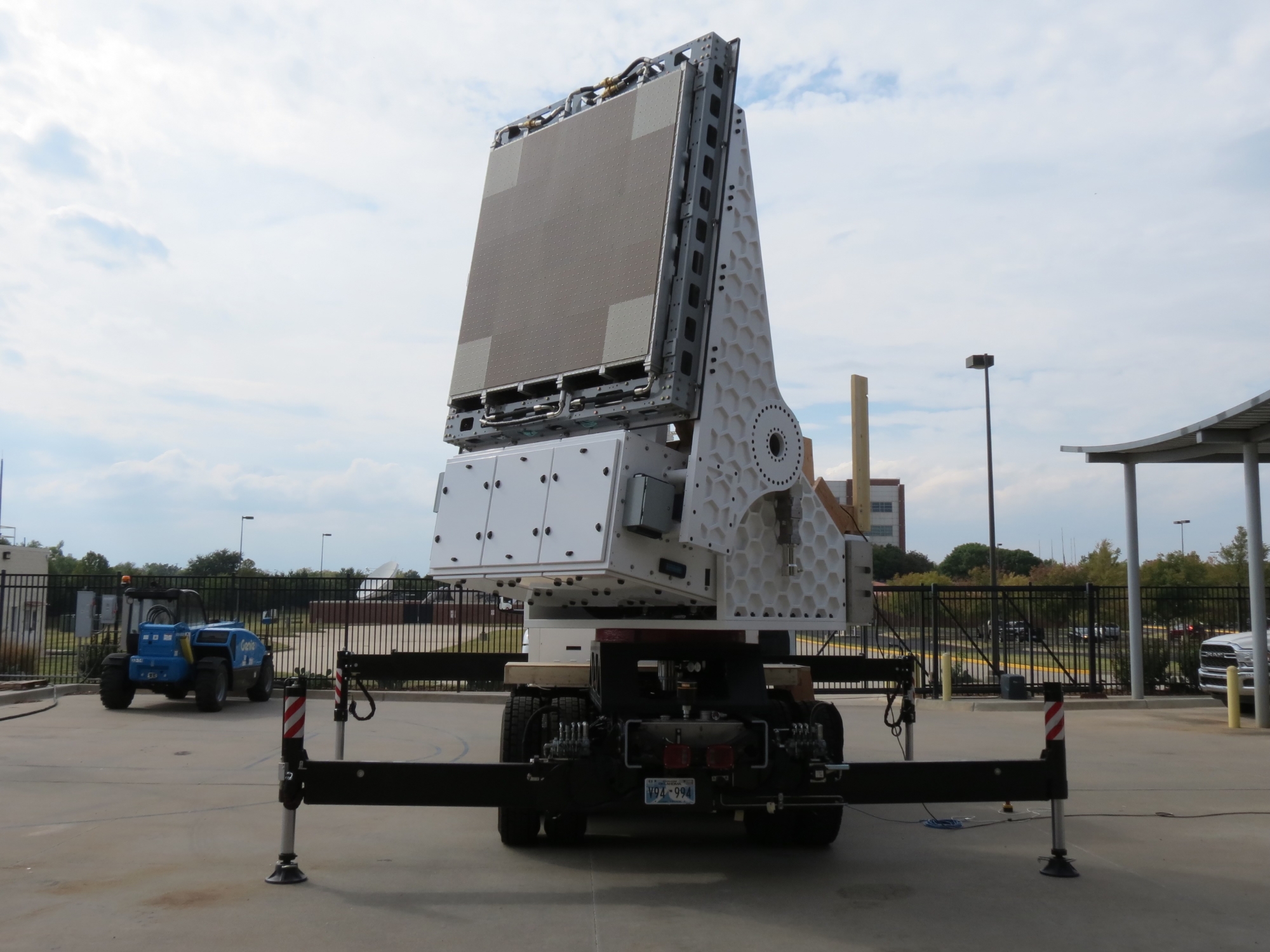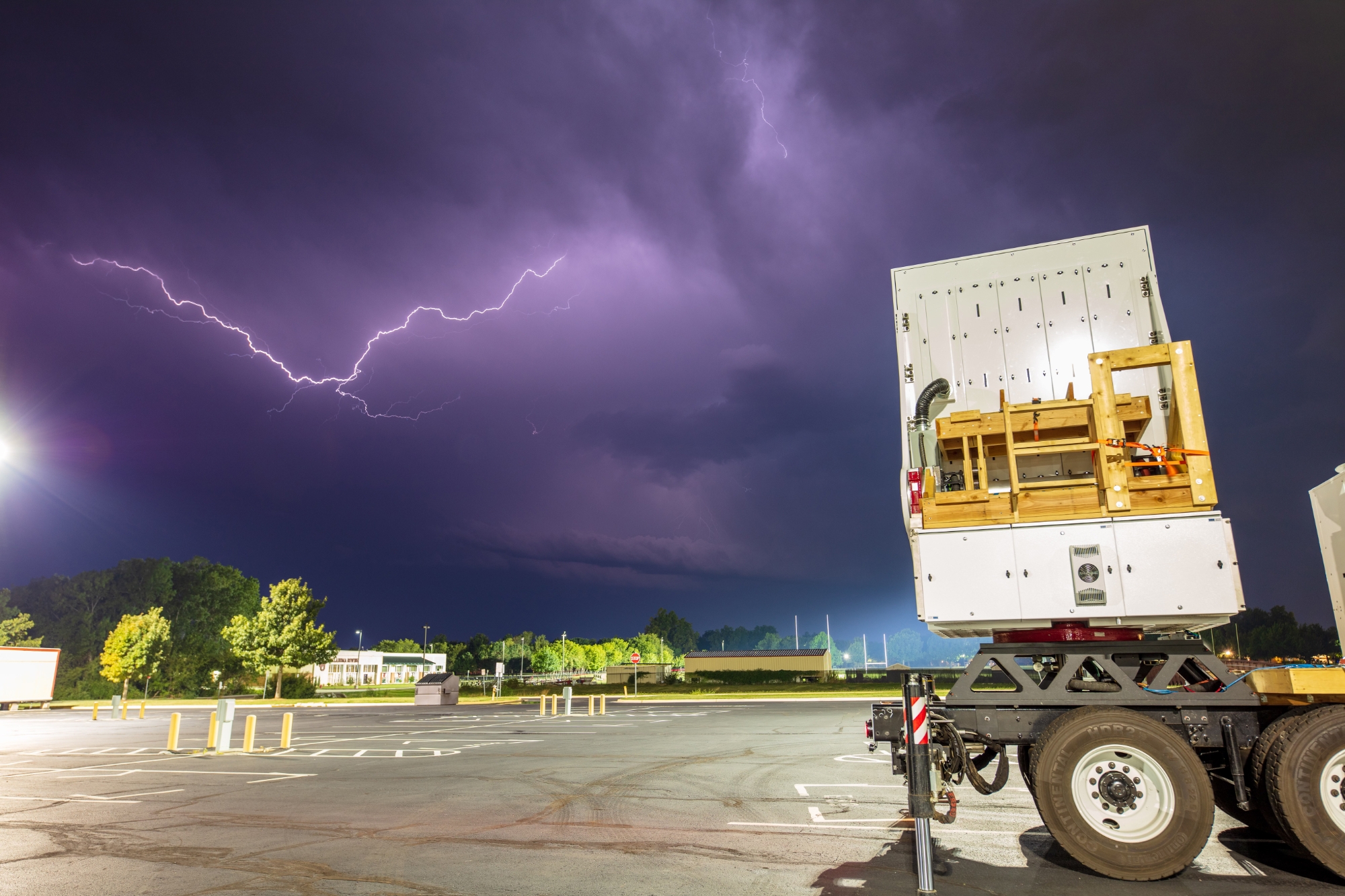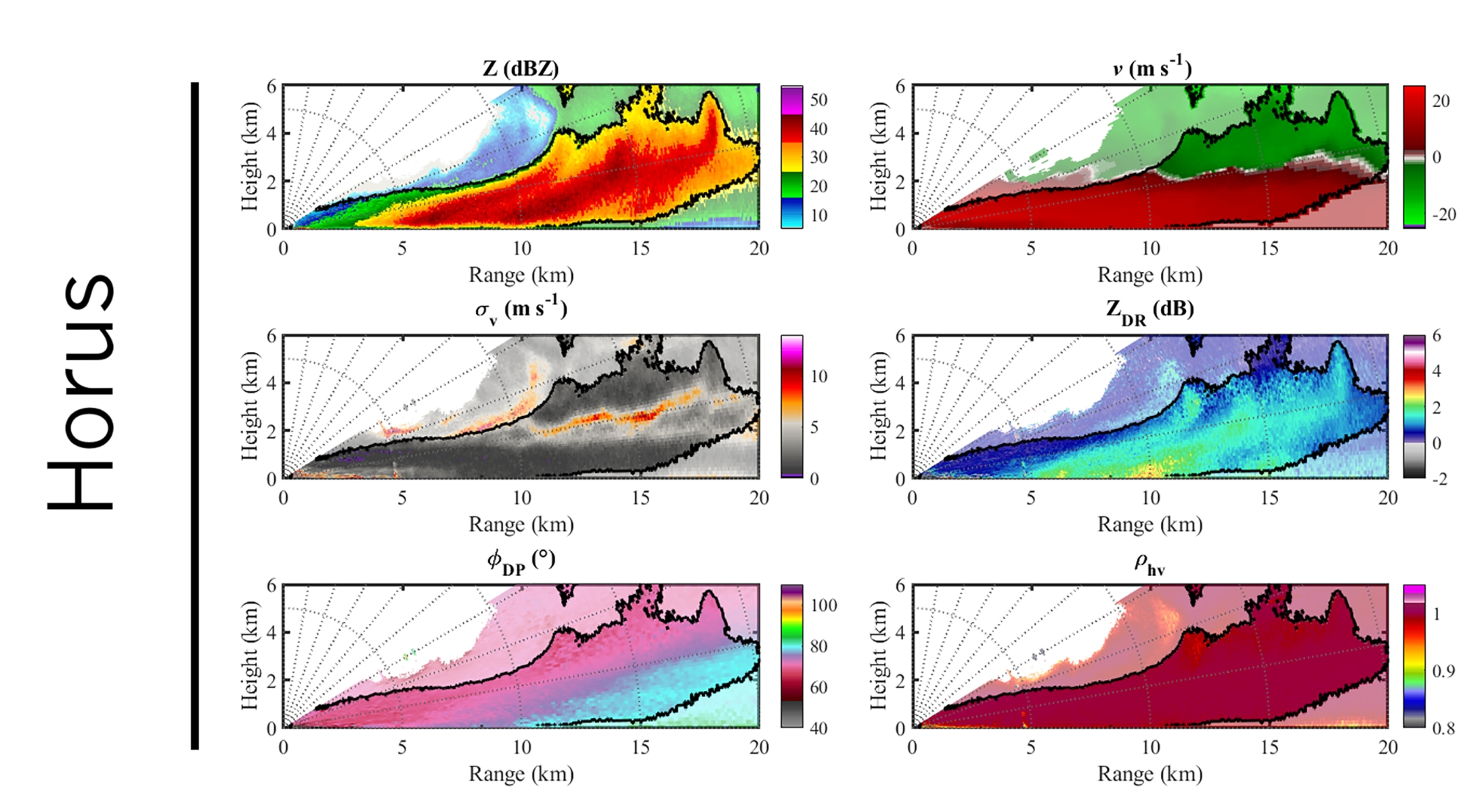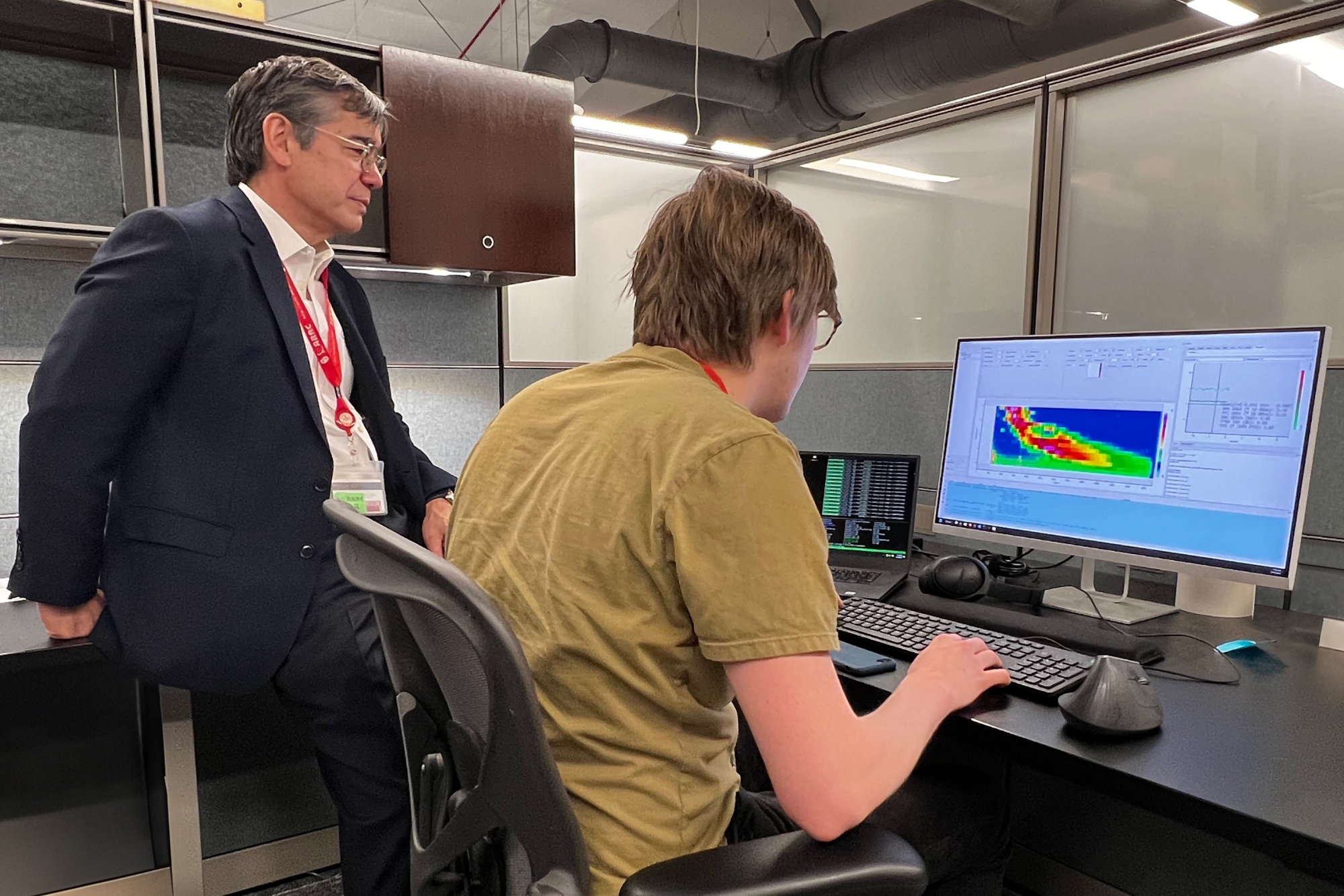A Look Back
“Conventional Doppler radars are large, mechanically rotating dishes that have produced extremely high-quality data for decades. They’re great systems, but their update times are inherently limited by the mechanical way they scan storms,” Palmer said. “With the goal of mitigating this limitation, experts in the ARRC with colleagues from the NSSL have developed Horus. The data being produced after just a few months of operations is amazing.”
After working in OU’s Cooperative Institute for Severe and High-Impact Weather Research and Operations, a recent addition to the ARRC team is David Schvartzman, who joined the ARRC team in 2020 as a research scientist and is now an assistant professor in the OU School of Meteorology.
“I was part of the team working on the NSSL’s Advanced Technology Demonstrator, currently the largest operational phased array weather radar, when I heard that the ARRC was starting the Horus project,” Schvartzman said. “I remember thinking that a fully digital polarimetric phased array weather radar was extremely audacious and likely impossible to develop but would be amazing if successful.”
The Dean of the College of Atmospheric and Geographic Sciences Berrien Moore III said, “Palmer and Schvartzman leading the Horus program makes perfect sense given their formal electrical engineering training and the fact that they are faculty in OU’s School of Meteorology. This interdisciplinary culture that we have created in the Norman weather community is obviously paying great dividends for the state and nation as well as for our students.”
